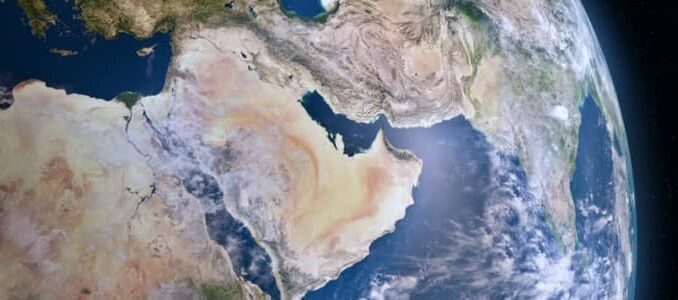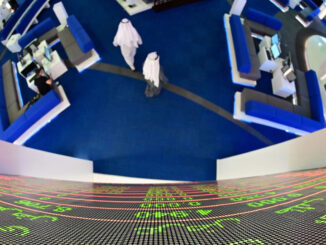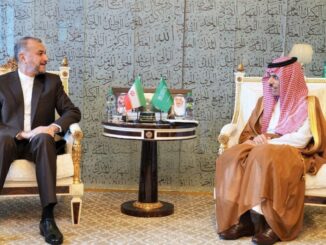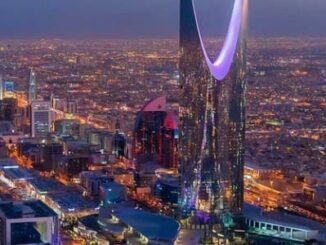
- Iran has around $50 billion in oil and gas projects in the works.
- Following the resumption of relations between Iran and Saudi Arabia, the latter is looking to invest in Iran’s hydrocarbon industries.
- Saudi Arabia is set to play its part in this turbo-charging of Iran’s oil and gas industry initially by investing in its petrochemicals sector.
The National Iranian Oil Company (NIOC) has revealed that the country has around US$50 billion in oil and gas and related projects now underway, with more to come. Given the precarious state of Iran’s economy, it is unsurprising to find that much of this has been pledged by its two major sponsors, China and Russia. More surprising, though – even with the resumption of relationship deal made on 10 March and related developments – is that Iran is expecting billions of dollars to come from its erstwhile arch-enemy Saudi Arabia. Moreover, this support for Iran’s core oil and gas industry from its long-time nemesis is also set to be expanded across several areas of mutual interest to the two countries, all under the watchful eye of Beijing and Moscow.
As examined recently by OilPrice.com, around US$20 billion of this will go to completing the development of the supergiant South Pars natural gas field – one half of the biggest gas field in the world. The South Pars site stretches across 3,700 square kilometres and holds an estimated 14.2 trillion cubic metres (tcm) of gas reserves in place plus 18 billion barrels of gas condensate. It already accounts for around 40 percent of Iran’s total estimated 33.8 tcm of gas reserves (mostly located in the southern Fars, Bushehr, and Hormozgan regions) and about 80 percent of its gas production. Around US$2.4 billion of this will go to finishing the often-delayed and highly controversial Phase 11, which for a long time has been a focal point for proxy hostilities between West and East, as analysed in depth in my new book on the new global oil market order. Around another US$1.6 billion will go on completing other phases, and in drilling 35 new wells across it. An additional US$15 billion will be spent on launching gas compressor stations at various points across all phases of the South Pars site. The remaining US$1 billion will be spent on the first part of expanding Iran’s liquefied natural gas (LNG) capabilities, as becoming a world-leading exporter of LNG has long been a core objective of Iran, as also analysed in depth in the book. This has already been achieved by neighbouring Qatar using its 6,000 square kilometre North Field (or ‘North Dome’) part of the supergiant gas reservoir.
Related: Chevron Getting Ready For New Oil Drilling In Venezuela
In line with boosting its nascent LNG sector, and its natural gas output up to at least 1.5 billion cubic metres per day (bcm/d) from the current 1 bcm/d or so by 2029, Iran is set to spend another US$3.2 billion on developing several other of its gas sites, including Kish, Balal, and Farzad B. Russia will be taking the lead in all these gas projects, according to a senior source in the European Union’s (E.U.) energy security complex spoken to exclusively by OilPrice.com last week. “Before the U.S. withdrew from the JCPOA [Joint Comprehensive Plan of Action, colloquially ‘the nuclear deal’] in [May] 2018, Russia had multiple major MoUs [memorandums of understanding] signed for seven big oil and gas fields in Iran – the most of any country,” he highlighted. These were by GazpromNeft for the Changouleh and Cheshmeh-Khosh oilfields, Zarubezhneft for the Aban and Paydar Gharb fields, Tatneft for the Dehloran field, and Lukoil for the Ab Teymour and Mansouri oil fields.
Crucially, in July 2022, Russian President, Vladimir Putin visited his Iranian counterpart in Tehran to set the seal on a US$40 billion wide-ranging memorandum of understanding (MoU) signed just a few days before between the NIOC and Gazprom. Among other deals contained in the MoU, Gazprom pledged its full assistance to the NIOC in the US$10 billion development of the Kish and North Pars gas fields with a view to their producing more than 10 million cubic metres of gas per day. The MoU also detailed a US$15 billion project to increase pressure in the supergiant South Pars gas field on the maritime border between Iran and Qatar. Gazprom further pledged assistance in the completion of various LNG projects and the construction of gas export pipelines.
Another sizeable portion of the US$50 billion to be spent in the next round of Iran’s oil and gas development programme will be directed at increasing its oil output from around the current 3 million barrels per day (bpd) or so up to about 5.7 million bpd, also by 2029. An immediate focus will be the supergiant Azadegan oil field, split into North and South field, with total estimated reserves of around 42 billion barrels of oil, of which around seven billion barrels are deemed recoverable. This will be followed by similar production-increasing efforts across the remainder of Iran’s fields in the highly oil-rich West Karoun region. Increasing production from the then-355,000 bpd level to at least 500,000 bpd, and then to 1 million bpd was a key part of China’s commitment in the all-encompassing ‘Iran-China 25-Year Comprehensive Cooperation Agreement’, as first revealed anywhere in the world in my 3 September 2019 article on the subject and fully examined in my new book.
It is apposite to note here that although an MoU was signed last week and the ‘Dasht Azadegan Arvand Company’ was set up with an initial US$7 billion investment made by two Iranian exploration and production companies and eight banks to implement the Azadegan project, China will be the driving force behind it. The China National Petroleum Corporation (CNPC) is still the lead foreign operator in Iran’s North Azadegan, with its operation there going live in November 2016 with production capacity of 75,000 bpd. CNPC also held the lead developer position in Iran’s South Azadegan from 2009 to 2014 until it was expelled from that field for delays in progress. However, since then, Chinese companies have again been working on several ‘contract-only’ projects in South Azadegan, alongside the nominal Iranian lead developers. These contract-only projects across Iran and run by China have proliferated since the U.S. reimposed sanctions on Iran after its unilateral withdrawal from the JCPOA in May 2018, as analysed in depth in my new book on the new global oil market order.
Saudi Arabia is set to play its part in this turbo-charging of Iran’s oil and gas industry initially by investing in its petrochemicals sector. As highlighted recently by OilPrice.com, over the latter part of 2017 and early 2018, the Oil Ministry of neighbouring Iraq talked to Saudi Basic Industries Corporation (SABIC) about the possibility of it taking a stake in its own giant Nebras Petrochemicals Plant project. These discussions, though, were increasingly sidelined as Saudi Aramco started to investigate the possibility of buying the majority share in SABIC ahead of its own initial public offering, then re-scheduled for 2021. “It is thought by China, Saudi Arabia, and Iran, that such projects [in the petrochemicals sector] will not attract too much attention from the U.S., which will allow for a gradual widening out of cooperation between the two countries [Saudi Arabia and Iran],” the E.U. source told OilPrice.com last week. Towards what eventual goal remains publicly unspecified as yet, but privately according to the source, Washington remains deeply concerned about Saudi Arabia being increasingly drawn into the China-Russia military alliance, as Iran has been.
In particular, according to the E.U. energy security source, the U.S.’s focus is on what Beijing’s endgame might be in building out the nuclear capabilities of rival key states in the Middle East, given China’s long-running and extensive ‘assistance’ to Iran’s nuclear ambitions. These fears were not helped with news just before Christmas 2021 that U.S. intelligence agencies had found Saudi Arabia was manufacturing its own ballistic missiles with the help of China. Currently, the only Arab nation to have nuclear reactors is the UAE. Even with the U.S.’s extensive presence of huge military military bases in and around the UAE, Washington was “extremely concerned” to find that China had been building a secret military facility in and around the UAE port of Khalifa. Based on classified satellite imagery and human intelligence data, U.S. officials stated that China has been working to establish “a military foothold in the UAE.” In Saudi Arabia’s case, it had previously been in talks to acquire nuclear technology from the U.S. under the ‘1-2-3’ protocol – intended to limit the enrichment of uranium for arms purposes. Whether China will insist on such a protocol, or if it is in place will insist that it is adhered to, remains to be seen.
ENB Top News
ENB
Energy Dashboard
ENB Podcast
ENB Substack



